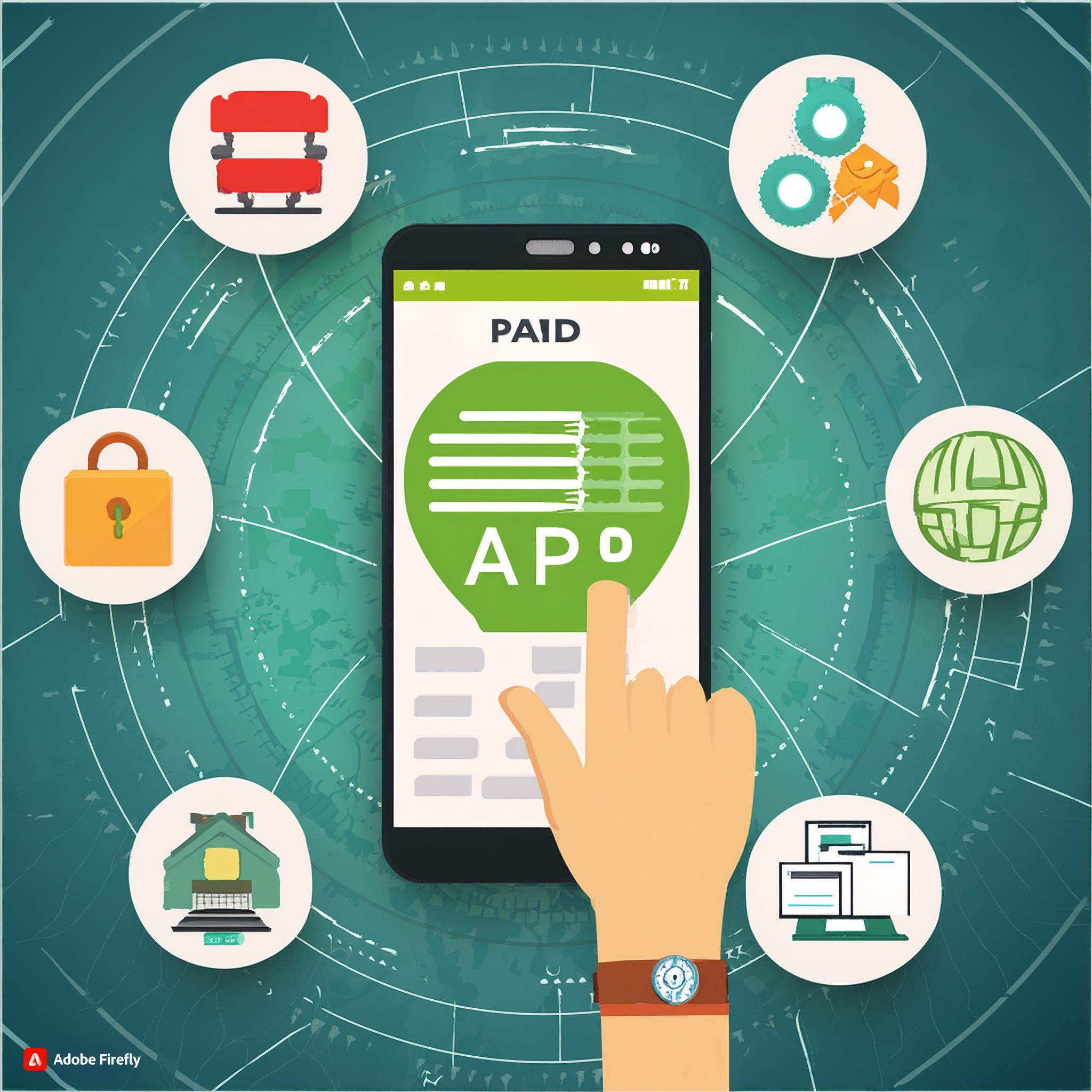1. Introduction
In today’s digital landscape, Application Programming Interfaces (APIs) serve as the cornerstone of modern software development, facilitating seamless communication and interaction between diverse systems, services, and platforms. APIs empower developers to leverage pre-built functionalities and integrate them into their applications, thus expediting development processes and improving overall efficiency.
As the demand for more sophisticated and feature-rich applications continues to rise, developers increasingly rely on APIs to access specialised services and functionalities that may surpass the capabilities of their applications. While many APIs are available for public use at no cost, there exists a thriving ecosystem of paid APIs that offer premium features, enhanced support, and advanced capabilities in exchange for a fee.
2. Overview
Paid APIs represent a distinct category of APIs that necessitate users to pay a fee for access to their services and functionalities. Unlike free APIs, which typically provide basic features with limited support, paid APIs offer developers access to a broader array of capabilities, premium support services, and additional resources to optimize their integration and utilisation.
Paid APIs encompass various pricing models, including subscription-based, usage-based, and hybrid models. Subscription-based models entail users paying a recurring fee at regular intervals (e.g., monthly or annually) to avail of the API’s services. Conversely, usage-based models charge users based on the volume of API calls or data consumed. Hybrid models amalgamate elements of both subscription and usage-based pricing, furnishing flexibility and scalability to accommodate diverse usage patterns and business requisites.
Paid APIs confer several advantages over their free counterparts, such as:
- Provision of premium features and functionalities unavailable in free APIs.
- Assurance of service level agreements (SLAs) and access to dedicated support channels for addressing technical issues and providing prompt assistance.
- Potential for revenue generation through monetisation strategies like usage fees, tiered pricing plans, and value-added services.
- Expedited development and reduced time-to-market for applications by leveraging pre-built functionalities and resources.
3. Types of Paid APIs
Classification of paid APIs based on pricing models: subscription-based, usage-based, hybrid.
- Subscription-Based Pricing:
- Subscription-based pricing involves users paying a recurring fee at regular intervals, such as monthly or annually, to access the API’s services.
- Usage-Based Pricing:
- Usage-based pricing, also known as pay-as-you-go or consumption-based pricing, charges users based on their actual usage of the API, typically measured by factors such as the number of API calls made, data transferred, or resources consumed.
- Hybrid Pricing:
- Hybrid pricing models combine elements of both subscription-based and usage-based pricing, offering users flexibility and scalability while maintaining predictability in costs.
4. Advantages of Paid APIs
- Enhanced features and functionality.
- Guaranteed support and service level agreements (SLAs).
- Potential for revenue generation through monetization.
5. Considerations Before Implementing Paid APIs
- Cost Analysis
- Examination of pricing structures: flat-rate, tiered, pay-per-call.
- Flat-Rate Pricing:
- Flat-rate pricing is a straightforward model where users pay a fixed fee for a set period, typically monthly or annually, regardless of the usage volume. Here’s a breakdown of its characteristics:
- Simplicity: Flat-rate pricing offers simplicity and predictability, as users know exactly how much they’ll be charged regardless of usage fluctuations.
- Ease of Budgeting: Users can budget more effectively since they have a fixed cost for accessing the API’s services.
- Suitability for Stable Usage: This model is ideal for users with stable or predictable usage patterns, where the volume of API calls or data consumed remains relatively consistent.
- Potential for Overpayment: Users may end up overpaying if their actual usage is lower than the fixed rate, leading to inefficiencies in cost management.
- Flat-rate pricing is a straightforward model where users pay a fixed fee for a set period, typically monthly or annually, regardless of the usage volume. Here’s a breakdown of its characteristics:
- Tiered Pricing:
- Tiered pricing divides usage into predefined tiers or bands, with different pricing levels for each tier. Here’s a closer look at its features:
- Graduated Pricing Structure: Users are charged based on the volume of API calls or data consumed, with pricing increasing as usage surpasses predefined thresholds or tiers.
- Flexibility: Tiered pricing offers flexibility, allowing users to select a pricing tier that aligns with their expected usage levels.
- Cost Efficiency: Users can optimize costs by choosing the most appropriate tier based on their usage projections, potentially reducing expenses compared to a flat-rate model.
- Complexity: Managing tiered pricing can be more complex, as users need to monitor usage levels and adjust their subscription tier accordingly to avoid overage charges or underutilization.
- Tiered pricing divides usage into predefined tiers or bands, with different pricing levels for each tier. Here’s a closer look at its features:
- Pay-Per-Call Pricing:
- Pay-per-call pricing, also known as usage-based pricing or pay-as-you-go, charges users based on the actual usage of the API, typically measured by the number of API calls made or data transferred. Here’s an in-depth look at its characteristics:
- Granular Billing: Users are billed for each API call made or data unit transferred, providing granular visibility into usage and costs.
- Cost Efficiency: Pay-per-call pricing can be cost-effective for users with sporadic or unpredictable usage patterns, as they only pay for the resources they consume.
- Scalability: This model scales seamlessly with usage growth, allowing users to accommodate fluctuating demand without overprovisioning or incurring unnecessary costs.
- Potential for Cost Overruns: While pay-per-call pricing offers flexibility, users need to monitor usage closely to avoid unexpected cost overruns, especially during periods of high demand or unexpected spikes in usage.
- Pay-per-call pricing, also known as usage-based pricing or pay-as-you-go, charges users based on the actual usage of the API, typically measured by the number of API calls made or data transferred. Here’s an in-depth look at its characteristics:
- Flat-Rate Pricing:
- Estimation of total cost based on projected usage and scalability needs.
- Keep a habit of not using paid API in development mode until it is required as it can cost a client more if the API is pay-per-call.
- Optimisation option that could help minimize costs while improving user experience:
- On button click API is called
Eg. Considering the API is pay-per-call, below image performs Place autocomplete API (n) number of calls the search TextBox is having characters count which is bad practice to implement paid API call.

- Comparing API
- Comparing API from different vendors with its maximum functionality on lesser price
Eg. Comparing Place autocomplete API from google and Map box

- Return on Investment (ROI) Assessment
- Identification of key metrics impacted by API integration: efficiency, revenue, user satisfaction.
- Calculation of potential ROI to justify investment.
- Scalability and Growth
- Evaluation of API scalability to accommodate future growth.
- Alignment of pricing models with anticipated scalability needs.
- Service Level Agreement (SLA) and Support
- Review of SLA terms: uptime guarantees, support availability, response times.
- Importance of reliable support channels for troubleshooting and issue resolution.
- Data Security and Privacy
- Assessment of API provider’s security measures and compliance with data protection regulations.
- Mitigation of potential risks related to data exposure and privacy breaches.
- Implement robust key management practices to safeguard encryption keys from compromise or unauthorized disclosure.
- Integration Complexity and Compatibility
- Evaluation of API documentation, SDKs, and developer resources.
- Compatibility analysis with existing system architecture and technologies.
- Vendor Lock-In and Flexibility
- Consideration of contract terms, licensing agreements, and exit strategies.
- Mitigation of risks associated with vendor lock-in through interoperable standards and modular architectures.
- Long-Term Viability and Future-proofing
- Examination of API provider’s roadmap, commitment to updates, and industry trends.
- Strategies for future-proofing system architecture against API obsolescence.
- Legal and Compliance Considerations
- Review of terms of service, licensing agreements, and regulatory compliance requirements.
- Consultation with legal experts to ensure adherence to contractual and regulatory obligations.
- Community and Reputation
- Investigation of API provider’s reputation within the developer community.
- Engagement with developer communities to gather feedback and insights.
6. Debug / Release & Development / Production setups
When setting up a paid API in different environments such as development (dev), production (prod), debug, and release, it’s crucial to manage configurations carefully to ensure smooth and secure operation.
Development (Dev) vs. Production (Prod) Environments
Development Environment ::
- Use Sandbox/Test API Keys: Utilize sandbox or test API keys provided by the API vendor to avoid incurring charges and to simulate different scenarios without affecting real data.
- Verbose Logging: Enable detailed logging to capture all API interactions, including request and response data, to facilitate debugging.
- Limited Scope: Restrict the scope of API access to minimal required permissions to limit exposure.
- Mock Services: Use mock services to simulate API responses for faster and more controlled testing.
- Rate Limit Management: Implement and test rate limiting to ensure the application can handle API usage limits gracefully.
Production Environment ::
- Use Production API Keys: Switch to production API keys with appropriate access levels.
- Error Handling: Implement robust error handling and fallback mechanisms to manage API failures or rate limiting issues.
- Monitor Usage: Continuously monitor API usage to ensure compliance with the API provider’s terms and to avoid unexpected costs.
- Secure Storage: Store API keys and secrets securely using environment variables or secret management services.
- Performance Optimization: Ensure API calls are optimized for performance to reduce latency and improve user experience.
Eg. Below example returns “-” if the build is in debug mode, else API call is being performed to get the prices from paid API.

Another way is writing the Shell script to change the url of paid API according to the environment selected.



Debug Vs. Release Mode
Debug Configuration ::
- Detailed Logging: Enable extensive logging to capture detailed information for troubleshooting. This includes request payloads, response data, and error messages.
- Assertions and Checks: Implement assertions and additional checks to validate the correctness of API responses and internal state during development.
- Testing Hooks: Use hooks or middleware to simulate different API responses and error conditions for thorough testing.
- Debugging Tools: Utilize debugging tools to step through API interactions and inspect variables and states.
Release Configuration ::
- Minimal Logging: Reduce logging to essential information to avoid performance degradation and exposure of sensitive data.
- Optimized Code: Remove or disable any debug-specific code or testing hooks to optimize performance.
- Security Measures: Ensure that all security measures are fully enforced, including the use of HTTPS, secure API keys, and proper authentication.
Monitoring and Alerts: Set up monitoring and alerting systems to detect and respond to issues in real time, ensuring the API is functioning correctly in production.


